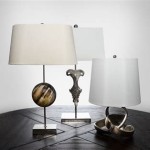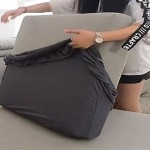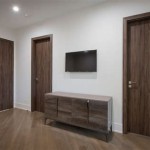Interior Wall Texture Design: Adding Depth and Dimension to Your Space
Interior wall texture design goes beyond simply painting a wall. It involves adding a layer of visual and tactile interest, transforming flat surfaces into dynamic elements that enhance the overall aesthetic and character of a room. Wall textures can create a sense of depth, dimension, and even influence the perception of space. They offer a versatile way to express personal style, evoke different moods, and complement various design themes.
Understanding the Benefits of Wall Texture Design
Incorporating wall texture design into your interior scheme offers a range of advantages that go beyond mere visual appeal. These benefits include:
- Enhanced Visual Interest: Wall textures break the monotony of smooth, flat surfaces, adding depth, dimension, and a point of visual focus to a room.
- Improved Acoustical Properties: Certain textures, especially those with raised patterns, can help absorb sound, reducing echoes and creating a more comfortable environment.
- Camouflaging Imperfections: Wall textures can effectively disguise minor imperfections in the wall surface, creating a more polished and uniform appearance.
- Versatility in Style: Wall textures offer a wide range of styles to suit different design aesthetics, from classic and traditional to modern and contemporary.
- Increased Durability: Certain textures, like those created with plaster or stucco, can be more durable and resistant to scratches and dents.
Exploring Different Types of Wall Textures
The world of interior wall texture design is vast and diverse, offering numerous options to suit a wide range of preferences and design styles. Some popular types of wall textures include:
1. Plaster Textures:
Plaster textures have been used for centuries and offer a timeless elegance to any space. They involve applying a mixture of plaster, sand, and water to the wall, creating various patterns and finishes. Common plaster textures include:
- Venetian Plaster: This luxurious finish resembles polished marble, adding a touch of sophistication to walls.
- Stucco: Stucco offers a rougher, textured finish that is durable and can be applied in various patterns, such as troweled, stippled, or swirl.
- Sgraffito: This technique involves scratching through layers of plaster to reveal contrasting colors and create intricate designs.
2. Paint Textures:
Paint textures are easier to apply and less expensive than plaster, offering a variety of finishes using specialized paints and techniques. Popular paint textures include:
- Sponge Painting: This technique uses a sponge to create a mottled, textured effect.
- Rag Rolling: This technique involves using a crumpled rag to create a subtle, uneven texture.
- Stippling: Using a stippling brush, this technique creates tiny dots of paint for a textured surface.
- Dragging: This technique involves dragging a trowel or other tool through wet paint to create a textured effect.
3. Wallcovering Textures:
Wallcoverings offer a wide range of textures and patterns, from subtle to bold, and are available in various materials, including fabric, vinyl, paper, and even natural materials like grasscloth. Some popular wallcovering textures include:
- Embossed: Embossed wallcoverings feature raised patterns that create a tactile and visually interesting surface.
- Textured Vinyl: Vinyl wallcoverings offer a wide range of textures, including brick, wood, and stone, and are durable and easy to clean.
- Grasscloth: Natural grasscloth wallcoverings provide a rustic, organic feel, adding warmth and texture to any room.
Choosing the Right Wall Texture for Your Space:
Selecting the appropriate wall texture should be a deliberate process, considering factors like:
- Room Size and Shape: Textures can be used to visually enhance the dimensions of a room. For instance, lighter textures can make a small room feel larger, while darker textures can make a large room feel more intimate.
- Design Style: Texture should complement the overall design scheme, whether it's modern, minimalist, traditional, or eclectic.
- Lighting: Lighting can affect how textures appear. Consider how light will illuminate the wall when choosing a texture.
- Maintenance: Some textures are easier to clean and maintain than others, so consider the level of traffic and upkeep the room will require.
By carefully choosing and incorporating wall textures, you can create a unique and personalized space that reflects your style and enhances the functionality and aesthetic of your home.

15 Modern And Trendy Texture Wall Paint Design Ideas

20 Wall Texture Design Ideas To Transform Your Home In 2025

Wall Texture Trends For 2024 What S In And Out

Combing Txt1014cmb1052 Wall Texture Design Asian Paints

18 Wall Texture Designs For Bedroom 2024 Orient Bell Tiles

Latest Wall Texture Design For Bedroom N

Metallics Spatula Txt1043cmb1153 Wall Texture Design Asian Paints

Textured Wall Design Ideas Fabdiz

Modern Latest Mandola Wall Texture Design Making Painting Ideas

The Art Of Wall Texture Exploring Diffe Techniques And Styles








